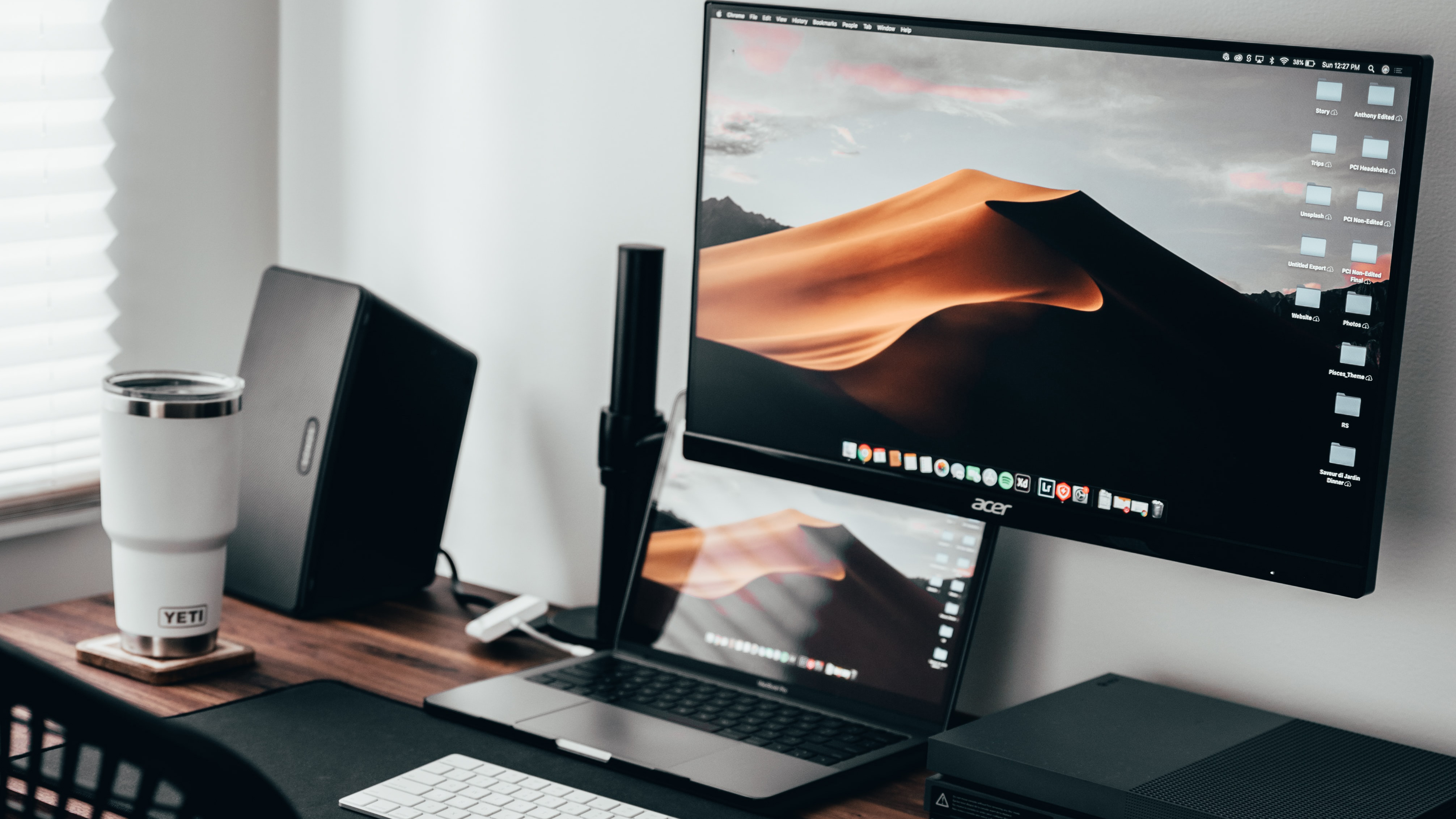

Your monitor is one of the most important things you’ll ever buy. Whether you’re working or gaming, editing photos or shopping online, everything you do on your computer will be portrayed in its pixels. That’s why it’s so important to get a good one: you’re going to be looking at it a lot, so it makes sense to get the best one you possibly can. Let’s discover the features and specifications that really matter.
The first thing to think about is you
What are you going to be using your monitor for? If you’re going to be using your monitor for work there’s no need to splash out on something built for the most hardcore gamer; similarly if you happen to be that hardcore gamer you’re going to be extremely unhappy with a monitor made for spreadsheets.
There are three main categories of monitor. Professional monitors are designed for things like photography or video, where high resolution, high quality displays with great colour accuracy are important. Gaming monitors are about incredible speed and fast response times. And last but not least, all-rounders can cope with pretty much anything for considerably less cash than their more targeted alternatives.
Higher resolution means a sharper picture
Resolution – the number of pixels in the display – is the simplest element of a monitor. The most common resolutions in monitors right now are Full HD, often called FHD or 1080p, and 4K. Full HD gives you 1,920 pixels across by 1,080 pixels vertically; 4K is 3,840 pixels by 2,160. So in two identically sized monitors, the 4K monitor would have a much sharper picture.
But do you really need a 4K monitor?
Do you need 4K? Probably not. For the vast majority of tasks, a good quality Full HD display with fast response times and a good refresh rate is ideal. That’s particularly true with smaller monitors, where the extra pixels packed into 4K make everything so small you have to upscale everything, defeating the whole point of a higher resolution display; 4K doesn’t really come into its own until you get towards or beyond the 30-inch mark.
If you’re a gamer, there’s a third option: 1440p. That sits right in the middle between Full HD and 4K and it’s an increasingly popular option in gaming monitors, offering higher resolution than Full HD without the downsides and expense of 4K.
Size matters too
Resolution is only part of the picture, pun fully intended. When you buy a display, it’s important to consider its pixel density too. A 1080p display with a 24-inch panel will have a much higher pixel density than a 1080p display with a 32-inch panel. That’s because they have the same number of pixels – 2,073,660, to be precise – but those pixels are smaller and more closely packed in the 24-inch than in the bigger monitor.
Sign up to the T3 newsletter for smarter living straight to your inbox
Get all the latest news, reviews, deals and buying guides on gorgeous tech, home and active products from the T3 experts
The sweet spot for pixel density is around 110 pixels per inch, or PPI for short. Below that, things start getting rather jaggy-looking and on-screen items get awfully big. The reverse applies when you go higher, with on-screen things getting smaller: on our 4K monitor, which has a high PPI, we’ve set the computer to upscale everything so it remains readable.
If you have a 32-inch monitor and it has a 1080p resolution, its PPI is 69; if it’s 4K, it’s 138. The difference is dramatic.
There’s another number to look for: the contrast ratio. That’s the difference between the darkest and lightest pixels possible on that monitor, so bigger is better.
Refresh rates are important
One of the key specifications of any monitor is its refresh rate, which is how many times per second it refreshes itself. A standard monitor will have a refresh rate of 60Hz, which means it refreshes sixty times per second. But many gamers expect 144Hz monitors, which refresh 144 times per second, and some go even further to 240Hz.
The difference is apparent with video, such as when you’re gaming: faster refresh rates deliver much smoother visuals – provided, that is, your graphics card is capable of delivering that speed.
Do you need it? If you’re working, browsing the internet, making video or watching YouTube, no: most films are 24 frames per second and YouTube maxes out at 60fps, so any monitor can happily handle both.
For gamers, there’s another thing to consider: screen tear. This occurs when there’s a mismatch between the refresh rate of your graphics card and the refresh rate of your monitor, so for example if your graphics card is running at 100fps and your monitor is only 60Hz, the graphics card is sending too much data for the monitor to process. The result is visible distortion that makes it look like your screen has been torn in two and stuck together badly…
Vsync, FreeSync and G-Sync
There’s a solution to screen tear. Or rather there are three: Vsync, FreeSync and G-Sync. All three technologies are designed to match the refresh rate of your monitor to the output of your video card, but they do it in different ways. Vsync adjusts the frame rate of the data being sent to your display, slowing it down so as not to overwhelm your monitor. And FreeSync and G-Sync adjust the refresh rate of your monitor to match your graphics card. FreeSync is the version you’ll find in PCs with AMD processors while G-Sync is used by NVIDIA graphics cards.
We think Vsync is great for gaming. The others are great too, but they will add to the cost of your monitor. If you don’t play games that require lightning-quick reactions, you can probably stick with Vsync.
Response time
Another key specification is the monitor’s response time and if you’re not fast you’re last. This matters to everyone, but it’s particularly important for serious gamers who need the fastest possible response.
A monitor’s response time is how quickly it can change its pixels’ colour. 5ms is quick enough for most of us, but monitors with 2ms or 1ms are even better: they deliver smoother motion without blurring or “ghosting”, which can negatively effect video quality.
Pick your ports
The last piece of the puzzle is connectivity – not just between your computer and your monitor, but possibly with other devices too: some monitors also double as hubs that you can use to connect multiple devices to a single computer such as a laptop. For example we’re writing this on a MacBook Pro connected with a single USB-C cable to our monitor; that cable sends graphics to the display while also charging the laptop and connecting various devices such as external drives and accessories.
For connecting displays, there are two key standards: HDMI and DisplayPort. Both of these standards are digital, so it’s possible to get them with different kinds of connectors: the USB-C cable we’re using here is also a DisplayPort cable. The most commonly supported versions of DisplayPort and HDMI in current monitors are 1.4 and 2.0 respectively, although newer versions of both (DP 2.0 and HDMI 2.1) are also available.
Writer, musician and broadcaster Carrie Marshall has been covering technology since 1998 and is particularly interested in how tech can help us live our best lives. Her CV is a who’s who of magazines, newspapers, websites and radio programmes ranging from T3, Techradar and MacFormat to the BBC, Sunday Post and People’s Friend. Carrie has written more than a dozen books, ghost-wrote two more and co-wrote seven more books and a Radio 2 documentary series; her memoir, Carrie Kills A Man, was shortlisted for the British Book Awards. When she’s not scribbling, Carrie is the singer in Glaswegian rock band Unquiet Mind (unquietmindmusic).

